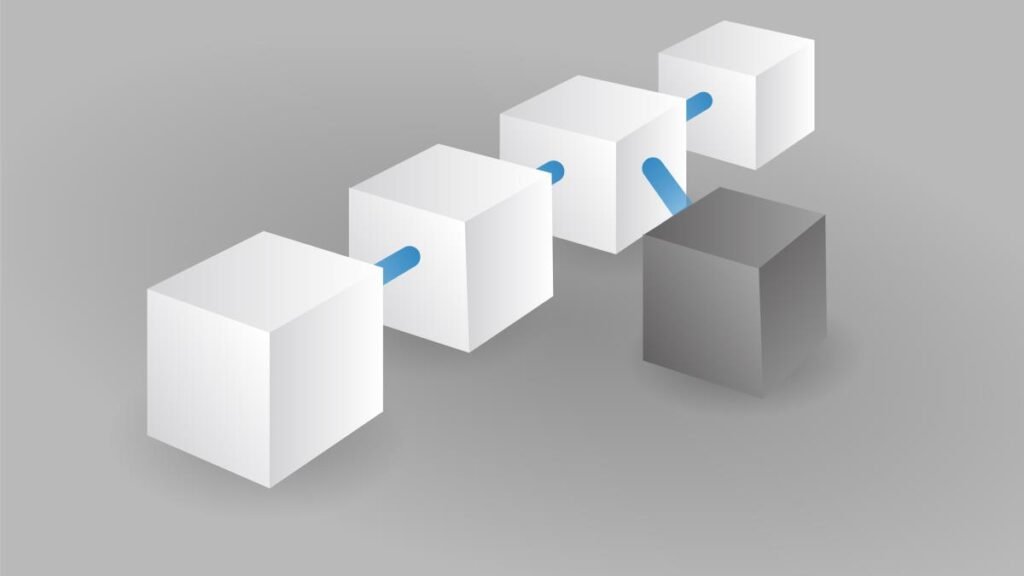In blockchain technology, blocks are the system’s backbone. They store transaction data and ensure the network runs smoothly, helping crypto prices remain high, traders stay happy, and digital assets continue to evolve and grow.
However, every now and then, a block is created and then discarded — this is known as an orphan block. While they might sound like a problem, orphan blocks are a natural part of how blockchains maintain their integrity. Let’s break down what orphan blocks are, why they happen, and how they fit into the bigger blockchain picture.
Orphan Blocks Explained
An orphan block is a block that is valid when it’s created but doesn’t join the finalized blockchain for various reasons.
This typically happens when two miners solve the same cryptographic puzzle nearly simultaneously, creating two competing blocks. Since the blockchain can only continue in one direction, the network decides which chain to follow by choosing the one with the most computational power or the longest chain. The block that isn’t chosen is labeled an orphan block.
Even though orphan blocks don’t join the main chain, their transactions aren’t lost. Instead, the transactions in these blocks are sent back to the pool of unconfirmed transactions, waiting to be included in a future block. This ensures no legitimate transaction is left behind, keeping the blockchain’s data complete and accurate.
Why Do Orphan Blocks Happen?
Orphan blocks aren’t extremely common, but they occur naturally in decentralized systems like blockchains. They’re most likely to happen when there’s a lot of mining activity or the network experiences latency issues.
For instance, during times of high mining activity, there’s a greater chance that two miners will solve the same puzzle simultaneously. This can lead to a temporary split in the chain, where two versions of the blockchain exist at the same time. The network quickly resolves this split by reaching a consensus, discarding the competing block that isn’t part of the longest chain.
Latency can also play a role. When communication between nodes is slow, it can take time for one miner’s solution to propagate across the network. During that delay, another miner might solve the same puzzle, creating a competing block.
Are Orphan Blocks Unique to Bitcoin?
Orphan blocks aren’t unique to Bitcoin. They can occur on any blockchain that uses a proof-of-work consensus mechanism or similar systems. However, different blockchains handle them in distinct ways.
For example, Ethereum introduced the concept of “uncle blocks.” While these are similar to orphan blocks, Ethereum rewards miners for uncle blocks to acknowledge their effort and maintain network security. This approach helps reduce the waste of computational power while still prioritizing the main chain.
Other blockchain protocols are working to minimize the occurrence of orphan blocks altogether. They’re improving node communication and refining consensus algorithms to ensure the network operates more smoothly.
The Role of Orphan Blocks in Decentralization
Orphan blocks highlight one of the key features of blockchain technology: decentralization. In a centralized system, conflicts like this would require a central authority to step in and decide which block to keep. However, with a decentralized system crypto exchange, the network itself reaches a consensus without relying on a single entity.
This process ensures that the blockchain remains tamper-resistant and secure. Even though orphan blocks might seem like a hiccup, they’re evidence of the system working as intended.
Are Orphan Blocks a Problem?
While orphan blocks aren’t usually a cause for concern, they come with a few potential risks. One theoretical issue is that a malicious miner could try to exploit the system by creating orphan blocks with fraudulent transactions. The idea would be to confuse the network or manipulate the blockchain.
Fortunately, this kind of attack is extremely difficult to pull off. It would require an enormous amount of computational power — more than most individuals or organizations can realistically achieve. That’s why such attacks are rare and largely unfeasible in well-established blockchains like Bitcoin or Ethereum.
On the other hand, orphan blocks provide valuable opportunities for improvement. Developers can study why they occur and use that knowledge to refine blockchain protocols. For example, better consensus mechanisms or faster communication between nodes could help reduce the chances of orphan blocks happening in the first place.
Learning from Orphan Blocks
Orphan blocks are an essential part of the blockchain ecosystem.
More than just a technical detail, orphan blocks highlight the decentralized nature of blockchain networks and the constant improvements in the field. As blockchain technology continues to evolve, understanding orphan blocks helps us appreciate the challenges and innovations that make these systems so powerful and secure.
